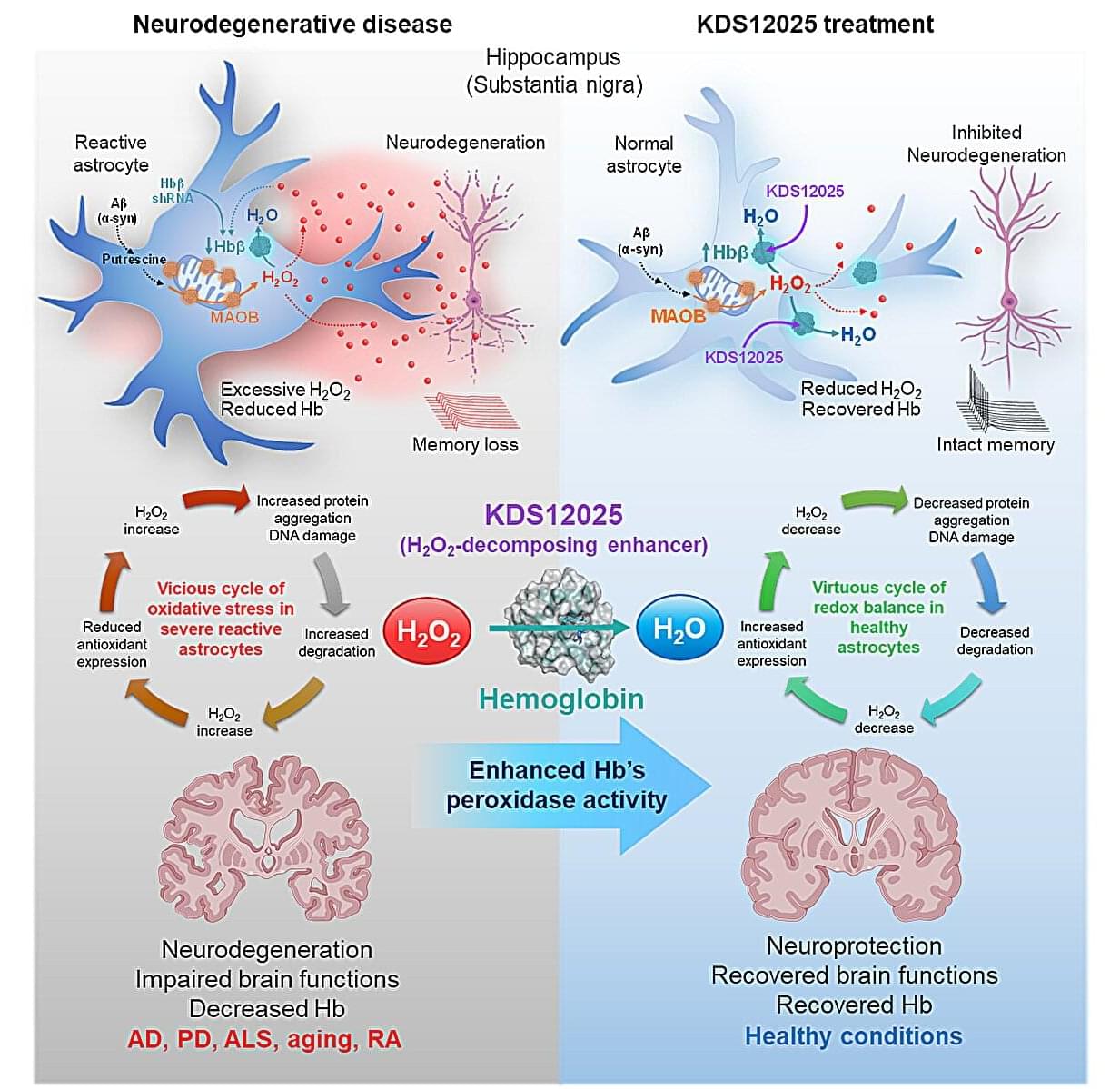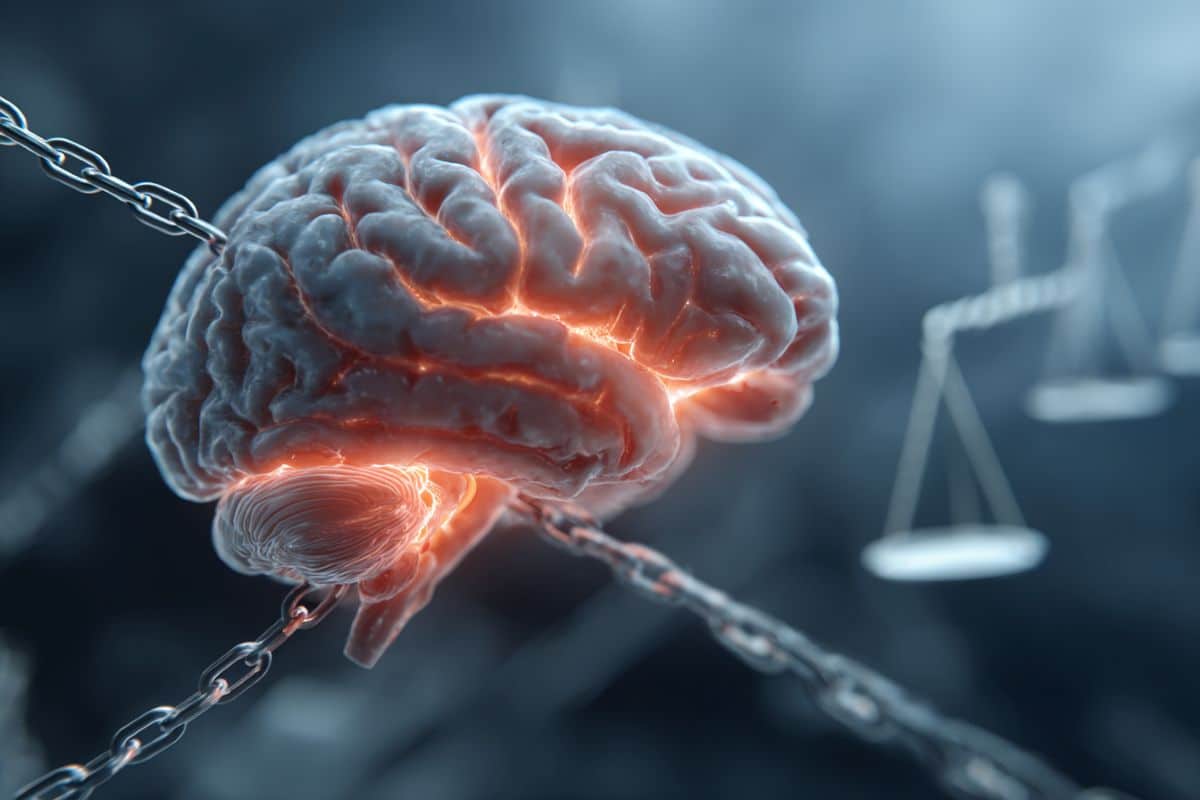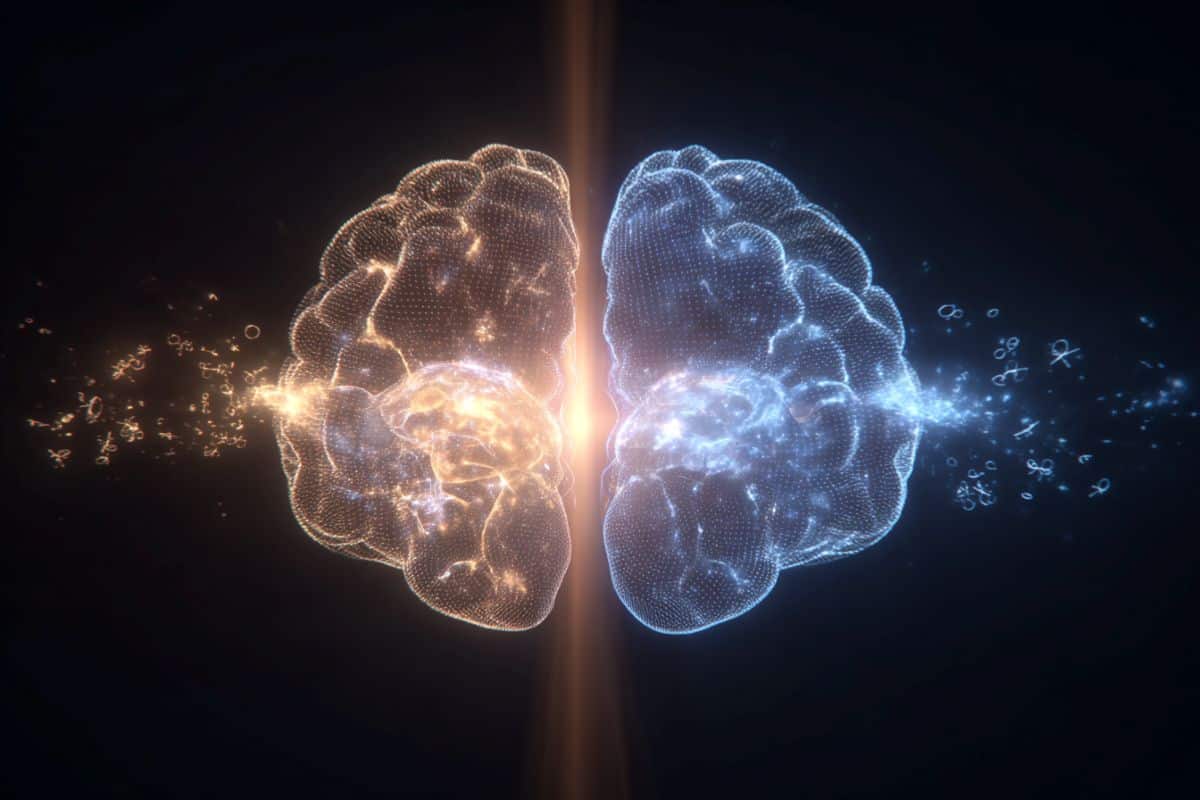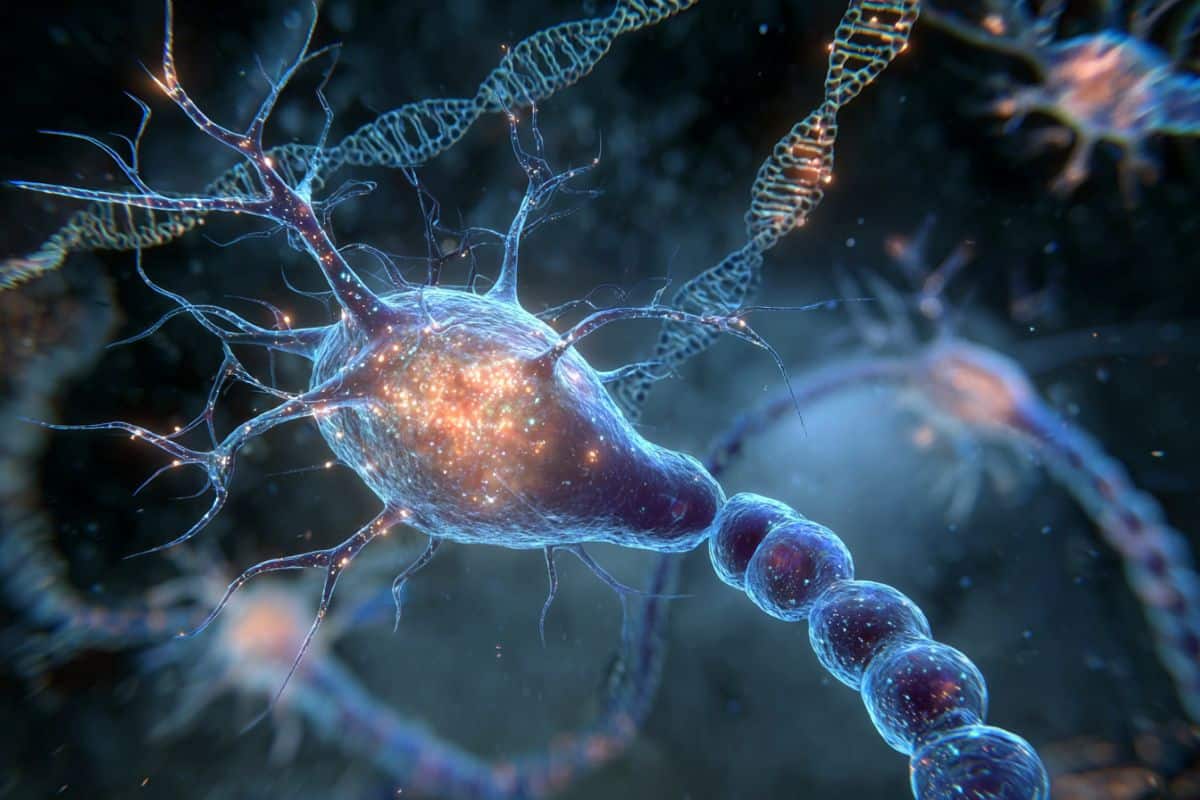A new device could help decode inner speech in paralysis patients, potentially restoring rapid communication.



Hemoglobin, long celebrated for ferrying oxygen in red blood cells, has now been revealed to play an overlooked—and potentially game-changing—antioxidant role in the brain.
In neurodegenerative diseases such as amyotrophic lateral sclerosis (ALS), Parkinson’s, Alzheimer’s, and aging, brain cells endure relentless damage from the aberrant (or excessive) reactive oxygen species (ROS). For decades, scientists have tried to neutralize ROS with antioxidant drugs, but most failed: they couldn’t penetrate the brain effectively, were unstable, or indiscriminately damaged healthy cells.
This new study, led by Director C. Justin Lee of the Center for Cognition and Sociality within the Institute for Basic Science (IBS) in Daejeon, South Korea, set out to identify the brain’s own defenses against a particularly harmful form of ROS—hydrogen peroxide (H2O2). The study has been published in Signal Transduction and Targeted Therapy.

The COVID-19 virus hijacks the machinery of testicular cells that produce the hormone testosterone in order to replicate. It also appropriates the metabolic pathways of these cells and cholesterol, a precursor of testosterone, thereby altering lipid metabolism for its formation.
This has been verified in a study conducted in Brazil by researchers from the Araraquara School of Dentistry at São Paulo State University (FOAr-UNESP), in partnership with the Ribeirão Preto School of Medicine at the University of São Paulo (FMRP-USP), in the testicles of transgenic mice. The research is published in the journal Frontiers in Cellular and Infection Microbiology.
The study revealed the presence of SARS-CoV-2 particles in lipid inclusions and organelles responsible for testosterone production in Leydig cells for the first time. In addition, the researchers described the mechanism by which the virus interferes with the functioning of these testicular cells. The discovery helps explain why male patients with severe COVID-19 have lower levels of testosterone, and possibly cholesterol.





After living with psychiatric illnesses, including depression and PTSD, for many years and experiencing his first panic attacks when he was just a kindergartner, the patient in this study had been hospitalized numerous times. The authors write that he had endured “one protracted depressive episode without distinct periods of remission for 31 years.”
They describe his medical history as “remarkable” – he has tried at least 19 different medications and undergone electroconvulsive therapy (ECT) three times. While this treatment can be effective in some cases, in this patient it unfortunately left him with cognitive impairment.
Ultimately, the patient had experienced suicidal ideation and made attempts to take his own life. It’s thought that around a third of patients with major depressive disorder will progress to TRD, as in this case, and that is a strong risk factor for suicidality.


Chronic pain is life-changing and considered one of the leading causes of disability worldwide, making daily life difficult for millions of people around the world, and exacerbating personal and economic burdens. Despite established theories about the molecular mechanisms behind it, scientists have been unable to identify the specific processes in the body responsible, until now.
In an exciting collaboration, a team led by NDCN’s Professor David Bennett, and Professor Simon Newstead in the Department of Biochemistry and Kavli Institute for NanoScience Discovery, have identified a new genetic link to pain, determined the structure of the molecular transporter that this gene encodes, and linked its function to pain.
The findings of the research offers a promising, new, specific target against which to develop a drug to alleviate chronic pain. The paper “SLC45A4 is a pain gene encoding a neuronal polyamine transporter” is published in Nature.